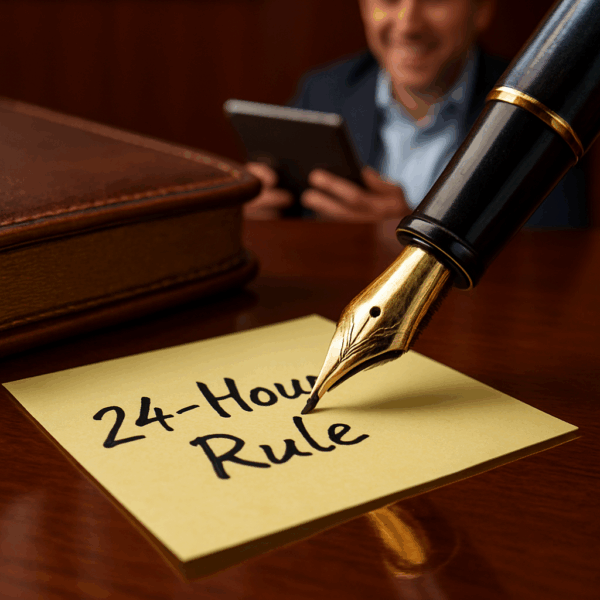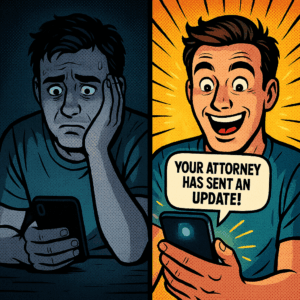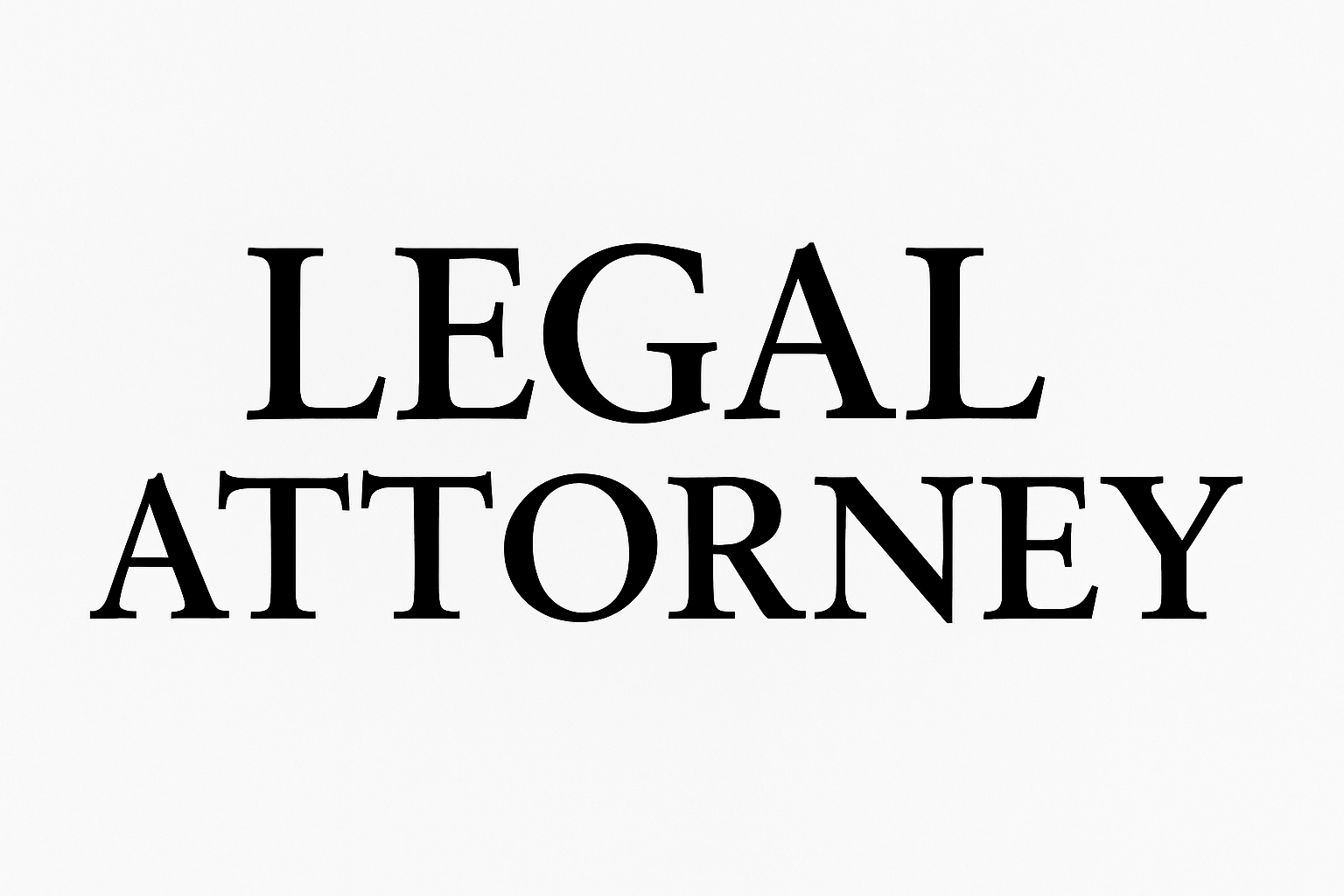The 24‑Hour Rule

Why Responsiveness Is the New Currency of Trust for U.S. Law Firms
Prologue — The Missed Ping
At 10:07 p.m., Elena Gomez filled out a contact form after her father was detained by ICE.
At 10:08 p.m., an auto‑reply promised a callback “within 48 hours.”
At 10:09 p.m., she opened another tab, found a competing firm with after‑hours chat, and hired them on the spot.
Multiply that vignette by the 62 percent of prospects who retain the first lawyer to respond¹ and you begin to see why responsiveness and timeliness—not pedigree, not price—now decide who wins a client and who never gets the chance.
 1 | The Clock Starts at Click
1 | The Clock Starts at Click
-
79 % of consumers expect an answer within 24 hours; 35 % expect one within minutes.²
-
Yet 60 % of firms never reply to inbound email at all.²
The post‑pandemic client is conditioned by DoorDash and tele‑medicine. Legal help feels just as urgent, and patience has halved since 2020.
“If lawyers don’t adapt to an on‑demand world, they’ll be out‑hustled by those who do.” — Clio Legal Trends Report 2023²
Stat Table • How Fast Is Fast Enough?
| Client expectation | Reality at U.S. law firms | Gap |
|---|---|---|
| Reply to email ≤ 24 h | 40 % comply | –39 pp² |
| Answer phone call (first try) | 40 % in 2024 vs 56 % in 2019³ | –16 pp |
| Weekend communication OK? | 68 % of clients say “yes”⁴ | 74 % of lawyers oblige—but at a cost⁴ |
(pp = percentage points)
2 | Slow Equals Risk—From Grievance to Malpractice
Neglect and lack of communication are the two most common disciplinary complaints against U.S. attorneys⁵. Malpractice carriers echo the pattern: failure to inform or respond is “the biggest reason clients sue their lawyers.”⁶ A single unreturned voicemail can snowball into an ethics charge under Model Rule 1.4 (duty to “promptly inform” and “reasonably consult”)⁷.
Visual Case Brief
Case: In re Smith (Fla. 2023)
Facts: Firm missed a 14‑day appeal deadline; client called 11 times, no call‑back.
Issue: Did lack of communication constitute neglect + dishonesty?
Holding: 90‑day suspension; $18k restitution.
Take‑away: Silence can be billed as fraud when it masks blown deadlines.
3 | The Mechanics of Speed
3.1 Human Workflows
| Best practice | Why it works | Pitfall to avoid |
|---|---|---|
| Response SLAs. Promise 4‑h reply to existing clients, 1‑h for new leads. | Sets clear expectations; lets staff triage. | SLA without staffing—burnout. |
| “Next‑step” model. Every outbound message ends with who/what/when. | Prevents back‑and‑forth lag. | Vagueness (“I’ll get back to you”). |
| Friday status pushes. Automated digest of matter milestones. | Converts silence into value signal. | Information overload → ignored emails. |
3.2 Technology Stack
| Tool | Solo / Small | Mid‑size | Big Law | Key note |
|---|---|---|---|---|
| CRM + Intake (Clio Grow, Lawmatics, HubSpot Legal) | ✓ | ✓ | — | Tracks lead age; auto‑nurture. |
| Client Portal (MyCase, Rocket Matter) | ✓ | ✓ | ✓ | Encrypts docs + real‑time timeline. |
| 24/7 Answering Service (LEX Reception) | ✓ | ✓ | Limited | Captures after‑hours calls; converts 62 % more leads³. |
| AI Chatbots (custom GPT, Harvey, AccessLegal) | — | ✓ | ✓ | Handles FAQs, schedules consults; must disclaim non‑lawyer status¹². |
4 | Culture, Capacity & Boundaries
The temptation to be “always on” collides with the profession’s burnout epidemic. Lawyers who only work business hours are 28 % more likely to report positive well‑being⁴. Firms leading the charge implement:
-
Team Inboxes – rotating “duty lawyer” covers evenings.
-
Scoped Availability – portal shows next available callback block.
-
Async Updates – secure feeds replace late‑night phone calls.
“A lack of timely communication is one of the most common errors alleged in malpractice claims.” — ABA Young Lawyers Division⁸
 5 | The Rise of “Ambient” Responsiveness
5 | The Rise of “Ambient” Responsiveness
Big Law’s AI councils aren’t chasing hype; they’re chasing latency. Custom GPT copilots now draft first‑pass emails or status memos in seconds, freeing associates to review rather than create. Nine of the AmLaw 20 have standing committees that rate tools on response‑time impact¹³.
Future scenario (2027?):
-
Predict‑reply engines surface likely client questions based on docket events.
-
Smart docketing auto‑texts clients when the court uploads a filing.
-
Signal‑based staffing: workflow analytics reroute urgent matters to available lawyers in different time zones.
6 | Blueprint: Winning the Speed Race Without Losing Your Mind
-
Benchmark your current median response time (email + phone + portal).
-
Define tiers (new lead, active client, dormant matter) with explicit SLAs.
-
Automate first touch (chatbot / receptionist) but humanize the second.
-
Close every loop—no message ends without a timestamped next action.
-
Review dashboards weekly; celebrate response‑time wins like new deals.
“Communication is so key to the lawyer‑client relationship it sits beside diligence in the disciplinary hierarchy.” — ABA Your Practice⁵
Epilogue — The Competitive Edge
Back to Elena Gomez: the firm that called her back in 11 minutes gained not only a client but three referrals within a month. In a legal market awash with AI and alternative providers, time is now the scarcest—and most billable—resource. Beat the clock, and you beat the competition.
Endnotes
-
BASF blog citing Clio 2024 LTR: 62 % of prospects hire the first firm; phone answer rate 40 %. The Bar Association of San Francisco
-
Clio Legal Trends Report & mystery‑shop study (2019 data revisited 2022). Clio
-
Ibid.; decline from 56 % (2019) to 40 % (2024) phone pickup. The Bar Association of San Francisco
-
Clio 2022 LTR—68 % of clients want after‑hours communication; 74 % of lawyers oblige. Clio
-
ABA Your Practice: top disciplinary complaints are neglect and lack of communication. American Bar Association
-
ABA GPSolo eReport (Oct 2023): malpractice carriers warn communication failures drive suits. American Bar Association
-
ABA Model Rule 1.4 (Communications). American Bar Association
-
ABA Young Lawyers article on email ethics: lack of timely communication common malpractice error. American Bar Association
-
Clio blog Guide to Better Client Communication (2025) for best‑practice recommendations. Clio
-
Clio resource on intake stages: 79 % expect 24‑h reply. Clio
-
Bar Association of San Francisco article on 24/7 answering services. The Bar Association of San Francisco
-
Florida Bar Opinion 24‑1: AI chatbots must carry disclaimers. The Florida Bar
-
Business Insider, “Inside the AI boom changing Big Law” (July 2025). Business Insider
-
Financial Times, “US firms prioritise jobs and safety in AI rollout” (Dec 2024). Financial Times
-
ABA Law Tech Today, “Leveraging AI‑powered chat to grow practice” (2024). American Bar Association
(All sources accessed August 7 2025.)

